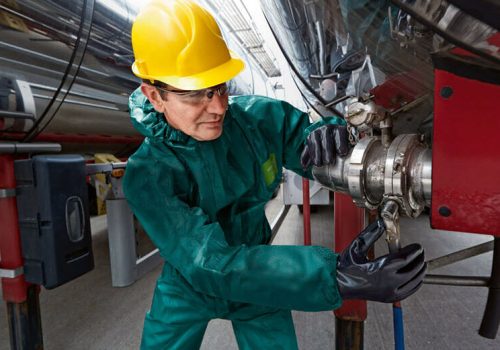Understanding OSHA’s Respiratory Protection Standards: What You Need to Know
In industries where workers are exposed to hazardous airborne contaminants, respiratory protection is essential to ensuring employee safety and well-being. To maintain safety and reduce risks, the Occupational Safety and Health Administration (OSHA) has established standards that outline the requirements for proper respiratory protection in the workplace. Understanding and complying with these standards is crucial for employers and workers alike.
This article explores the key elements of OSHA’s respiratory protection standards, helping you stay compliant while safeguarding your workforce.
1. The Importance of Respiratory Protection
OSHA’s respiratory protection standards are designed to prevent work-related illnesses and injuries caused by exposure to harmful airborne contaminants such as dust, fumes, gases, and vapors. Without proper protection, these contaminants can lead to serious health issues, including respiratory diseases, lung damage, and even long-term conditions like asbestosis or silicosis.
Respirators serve as a vital barrier between workers and harmful substances in the air. Whether through particulate filters, chemical cartridges, or supplied air systems, respirators help ensure that employees breathe cleaner air, reducing the risk of respiratory illnesses.
2. OSHA’s Requirements for Respiratory Protection
To comply with OSHA’s respiratory protection standards, employers must implement a respiratory protection program when airborne hazards cannot be controlled by other means (like ventilation systems). The program must include several key components:
- Assessment of Hazards: Employers must evaluate the work environment to identify and assess potential respiratory hazards. This includes determining the types and levels of contaminants workers may be exposed to.
- Selection of Respirators: Based on the assessment, employers must select the appropriate respirator for the task. For instance, a full-face respirator may be necessary for environments with high concentrations of hazardous fumes or particulates.
- Medical Evaluations: OSHA requires employers to provide medical evaluations to ensure workers are physically capable of wearing a respirator.
- Fit Testing: Before using any tight-fitting respirator, workers must undergo a fit test to confirm that the respirator forms a proper seal with the face. A proper fit is critical to ensure the respirator functions effectively.
- Training: Workers must receive training on the correct use, limitations, and maintenance of respirators. Training helps ensure that workers understand how to wear and care for their equipment properly.
- Maintenance and Care: Respirators must be inspected, cleaned, and maintained regularly to ensure continued protection. Filters and cartridges must also be replaced as needed, based on the specific contaminants present in the work environment. You can find more details on proper respirator maintenance and care to help keep the equipment in top condition.
3. Types of Respirators and Their Uses
OSHA recognizes several different types of respirators, each designed to protect against specific airborne hazards. The two main categories are:
- Air-Purifying Respirators (APRs): These respirators use filters, cartridges, or canisters to remove contaminants from the air. APRs, such as half-mask and full-face respirators, are commonly used to protect against particulate matter like dust, as well as chemical vapors and gases.
- Atmosphere-Supplying Respirators (ASRs): These respirators provide clean air from an external source, such as a tank or air line, making them suitable for environments where the air is not breathable (e.g., oxygen-deficient or highly contaminated spaces).
Selecting the right type of respirator depends on the contaminants present and the working conditions. For example, workers in environments with toxic gases may require a chemical cartridge respirator, while those exposed to dust may only need a particulate filter respirator.
4. Fit Testing: A Crucial Step in Respirator Use
Fit testing is an integral part of OSHA’s respiratory protection standards. It ensures that tight-fitting respirators, such as full-face or half-mask respirators, properly seal to the worker’s face, preventing contaminants from leaking into the mask. There are two types of fit tests:
- Qualitative Fit Testing: This test uses the wearer’s senses (smell or taste) to detect any leaks in the respirator. If the wearer can detect the test agent (usually a harmless odor or flavor), the respirator does not fit properly.
- Quantitative Fit Testing: This test uses specialized equipment to measure the amount of leakage into the respirator. It provides a more precise measurement of how well the respirator fits the worker.
Fit testing must be conducted annually, or whenever an employee’s physical condition changes (e.g., significant weight gain or loss), as this may affect the fit of the respirator.
5. Employee Training and Education
Training is a cornerstone of OSHA’s respiratory protection program. Workers need to be fully aware of the proper use and limitations of their respiratory protection. Employers are responsible for providing training on:
- How to correctly wear and adjust the respirator
- The respirator’s capabilities and limitations
- How to inspect, clean, and maintain the respirator
- When to replace filters, cartridges, and parts
Effective training helps workers maximize the protection their respirators provide and prevents misuse or neglect that could reduce the equipment’s effectiveness.
Conclusion
Understanding OSHA’s respiratory protection standards is critical for maintaining a safe workplace, especially in environments where hazardous airborne contaminants are present. By following OSHA’s guidelines—conducting hazard assessments, selecting the appropriate respirators, ensuring fit testing, and providing proper training—employers can protect their workers from respiratory hazards and comply with regulations.
For further reading on how to maintain compliance and ensure safety in your workplace, explore resources on respirator maintenance and other safety measures to keep your team protected.





